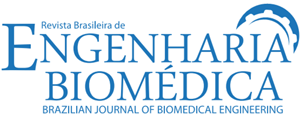INTRODUCTION: Thrombosis is a complex disease that is often silent and is characterized by thrombus formation within the blood vessel. It can lead to a venous obstruction in the body, severe sequelae and even death. Thrombus formation occurs when there is reduced blood flow and/or the release of procoagulant substances caused by external factors. In Brazil, the data on this pathology are still underestimated, and its incidence is approximately 0.8 cases/1000 inhabitants per year according to the literature. The aim of this study was to develop and validate a predictive method for the risk of thrombosis or thromboembolism according to various risk factors. METHODS: This is an observational and retrospective study based on a convenience sample of records. It was approved by the Institutional Review Board (IRB) of the University Mogi das Cruzes and the Heart Hospital of the São Paulo. The sample was classified according to the risk, and the assessment of concordance was performed by determining the Kappa coefficient and accuracy. RESULTS: Of the observed patients, 23 (46%) were women, and 86% were over 45 years old. The mean age of the patients was 60.8 years. Forty-eight percent of the patients underwent surgery for more than 30 minutes. In this study, the method categorized 29 (58%) patients as moderate risk, 10 as low risk and 11 as high risk. Two cases of thrombotic disease were sufficient for validation. CONCLUSION: The use of this software as a predictive method was feasible, providing fast filling, immediate scoring, flexibility and an upgrade over previous systems. The software will not substitute for diagnosis, which is a medical competence, but it may help as a warning of risk.
Predictive method; Risk factors; Thrombosis; Thromboembolism

 A novel method for predicting the risk of thrombosis and thromboembolism
A novel method for predicting the risk of thrombosis and thromboembolism








